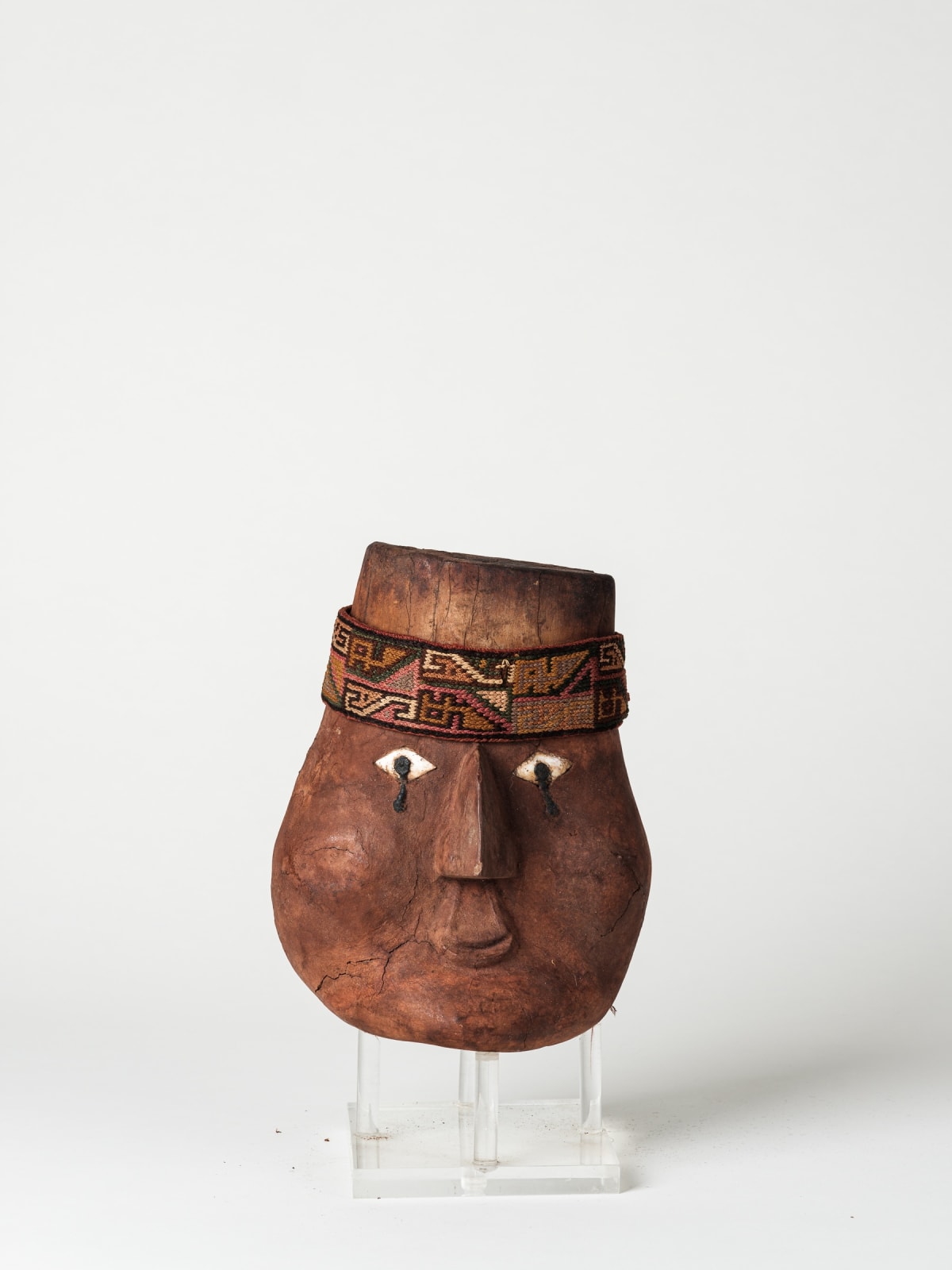Tiwanaku Culture
8'2" x 6'1" x 4'3" in.
Further images
The Tiwanaku wooden mask is meticulously carved from a single piece of wood, usually from native trees like cedar or mahogany, known for their durability and fine grain. Skilled artisans with a deep understanding of Tiwanaku iconography and symbolism meticulously shape the mask, imbuing it with spiritual and cultural meaning.
The mask typically depicts a human face, although with distinct stylized features. The Tiwanaku people emphasized certain characteristics, such as large almond-shaped eyes, an elongated nose, and prominent cheekbones. These features are often carved in a way that conveys a sense of power, mystery, and spirituality.
The Tiwanaku wooden mask played a central role in religious and ceremonial practices. It was used during important rituals, such as ancestor worship, fertility rites, and agricultural ceremonies. The mask was believed to embody the presence of deities or ancestral spirits, and wearing it or displaying it was thought to facilitate communication with the spiritual realm.













